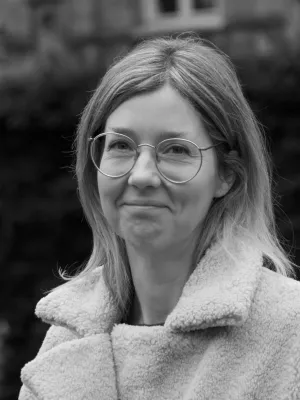
Mimmi Barmark
Senior Lecturer

Hem sjuka hem : En verklig konstruktion och dess sociala bestämningar
Home Sick Home : The Social Basis of an Actual Construction
Author
Summary, in English
This thesis deals with SBS in two ways. The prevalence and distribution of housing-related SBS in Malmö, Swedens third largest city, is examined through a random sample survey. The analysis shows that there are major differences between social groups. High education, a non-Swedish background, unemployment and young age are all factors associated with a higher risk of reporting SBS. The study also shows that subjective aspects of the housing situation, in particular general housing satisfaction, have a significant influence on the tendency to report SBS. In conclusion the empirical analysis suggests that symptoms related to the physical indoor environment are concentrated to houses constructed between the years 1976-85.
Taking its point of departure in critical realism, the thesis further discusses the metatheoretical question of the relationship between different types of explanations. SBS and other diffuse syndromes have so far mainly been studied as medical or 'micro-psychosocial' phenomena. It is suggested that models of explanation on these lower levels ought to be linked to theories on a macro-social level if the origin and character of these phenomena are to be fully understood. It is further argued that theoretical development on the macro-social level can help alleviate the stigma associated with psychosocially caused (psychosomatic) illness in general. The discussion ends with a model being presented that accommodates and integrates explanations on different levels and thereby illustrates the interplay between nature and culture. The model is applicable not only to SBS but to all illnesses that reside on the boundary between the 'physical' and the 'psychological', the 'real' and the 'constructed'.
Department/s
- Sociology
Publishing year
2007
Language
Swedish
Document type
Dissertation
Publisher
Sekel Bokförlag
Topic
- Sociology (excluding Social Work, Social Anthropology, Demography and Criminology)
Keywords
- Sociology
- late modernity
- risk
- models of explanation
- housing
- social explanations
- social causes
- Malmö
- Sweden
- survey
- critical realism
- environmental illness
- sick building
- medically unexplained
- Social structures
- Sociologi
- risk
- Malmö
- Sociala strukturer
Status
Published
Supervisor
- Anna-Lisa Lindén
ISBN/ISSN/Other
- ISBN: 978-91-976529-6-4
Defence date
23 March 2007
Defence time
10:15
Defence place
Palaestra, Lundagård
Opponent
- Rolf Lidskog (professor)

